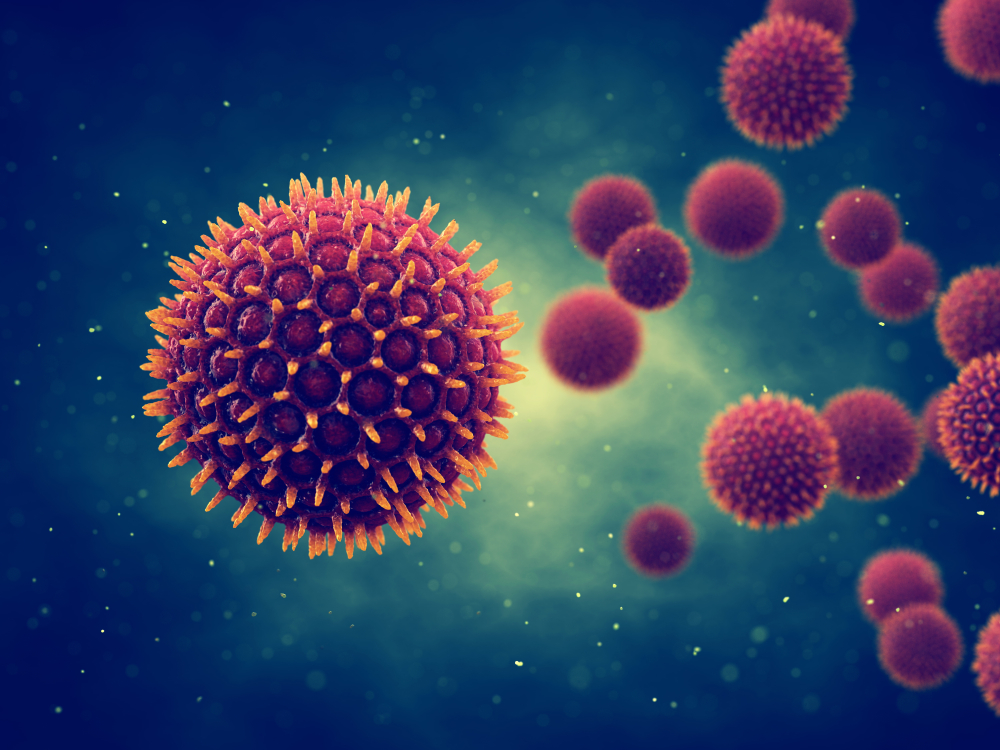Now Reading: Can The Air We Breathe Predict The Next COVID-19 Surge?
-
01
Can The Air We Breathe Predict The Next COVID-19 Surge?
Can The Air We Breathe Predict The Next COVID-19 Surge?

We may now be able to use elements in the air to predict surges in COVID-19 and flu cases. A new study, presented at the annual meeting of the American Society for Microbiology, found that the monitoring of airborne fungal spores can be used as an early warning system for influxes in cases of respiratory viruses.
Researchers found that when there is an increase in the levels of fungal spores in the air, there is also an increase in cases of illnesses like COVID-19. This correlation suggests that air monitoring systems could be an effective form of public health used to warn people of rising risks of respiratory viruses.
“By monitoring the air we breathe, we may be able to better forecast and prepare for seasonal outbreaks of respiratory viral infections,” said Félix E. Rivera-Mariani, presenting study author and associate professor of Biochemistry and Special Topics in Biology at Lynn University, in a press release. “These findings may help inform environmental risk alerts, particularly for vulnerable populations like the elderly or those with asthma and allergic rhinitis.”
Read More: An Infectious Fungus Can Cause Valley Fever, Creating Health Risks — Here’s What to Know
How Can The Air Predict COVID-19 Outbreaks?
For this study, researchers were interested in learning more about the relationship between environmental exposures and respiratory viral infections. Environmental exposures include things like fungal spores and pollen that can potentially play a role in triggering respiratory illnesses like COVID-19.
Although studies have explored the links between environmental exposures and chronic health issues like asthma and allergies, there have been relatively few studies examining how these exposures impact viral infections.
To help close the gap on this connection, researchers collected data every day from 2022 to 2024 in two highly populated areas of Puerto Rico. The data being collected included the amount of airborne fungal spores and pollen and the amount of people diagnosed with COVID-19 or the flu.
By analyzing these two datasets, the team was able to observe a connection between high levels of environmental exposures and an increase in cases of respiratory viruses.
Using The Air As A Warning Sign For COVID-19
Using both machine and statistical learning models, scientists uncovered that monitoring for airborne fungal spores can be used as an early warning system for illnesses like COVID-19 and influenza, especially in the fall. Although the presence of pollen did not show a significant connection to cases of respiratory illnesses, the presence of fungal spores was strongly linked to these viruses.
“The findings from our study suggest that monitoring airborne fungal spore levels could help predict short-term outbreaks of flu and COVID-19, giving public health systems an early warning signal,” said Rivera-Mariani in the press release. “Our findings also highlight the potential role of environmental factors — not just person-to-person spread — in contributing to the incidence of respiratory viral infections. That could open new doors for targeted public health alerts, especially in areas with high outdoor airborne fungi.”
The machine and statistical models used during this study were able to use levels of airborne fungal spores to predict surges in COVID-19 and the flu with high accuracy. For future studies, the research team plans to look into whether environmental exposures can also be connected to increases in hospitalizations and deaths from respiratory viruses.
“We also hope to collaborate with local health agencies to explore incorporating fungal surveillance into existing outbreak forecasting systems,” said Rivera-Mariani in the press release.
Ideally, the models and monitoring systems used in this study could be implemented throughout a wide range of geographic areas as a public health measure and early warning system for these deadly outbreaks that are becoming more common with each passing year.
This article is not offering medical advice and should be used for informational purposes only.
Read More: New COVID Variant NB.1.8.1 Spreads in the U.S., Foreshadowing a Likely Summer Surge
Article Sources
Our writers at Discovermagazine.com use peer-reviewed studies and high-quality sources for our articles, and our editors review for scientific accuracy and editorial standards. Review the sources used below for this article:
As the marketing coordinator at Discover Magazine, Stephanie Edwards interacts with readers across Discover’s social media channels and writes digital content. Offline, she is a contract lecturer in English & Cultural Studies at Lakehead University, teaching courses on everything from professional communication to Taylor Swift, and received her graduate degrees in the same department from McMaster University. You can find more of her science writing in Lab Manager and her short fiction in anthologies and literary magazine across the horror genre.






















